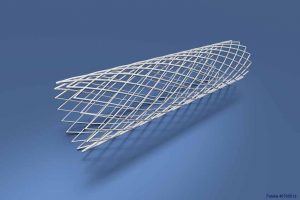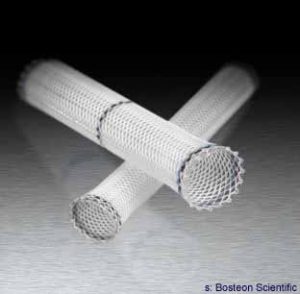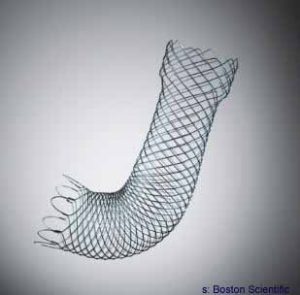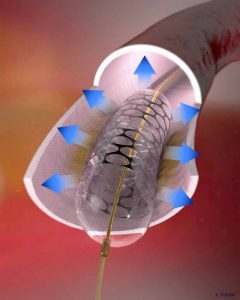PATIENT INFORMATION: Alimentary System Implants
What … for? (Indications)
Implants in the region of the digestive tract serve to repair and restore e. g. the continuity of the gastrointestinal tract (esophageal, biliary, pancreatic, duodenal, colo-rectal).
They help for abdominal wall reconstruction and the gastroesophageal Reflux Disease (GERD), accidental bowel leakage (fecal or bowel incontinence) and hernia repair.
Numbers n/a
Times
Depending from underlying disease.
Contraindications
- behavioral: Missing, low compliance
- medical: Infectious diseases, comorbidities precluding the expected benefit, frailty, procedure specific impediments, low life expectancy
- during surgery: Unexpected grade of disease.
Risks
- during surgery: Impracticability (e.g. inability to pass through), problems with general anesthesia, death.
- short term: Wound infection, no benefit.
- long term: Chronic infection, rejection of the implant, no benefit.
- restrictions: Depending from underlying disease, control regiment.
Failures n/a, too many varieties
Material
- autologous Fat (human)
- allogenic Collagen (human)
- xenogenous Collagen (porcine)
- alloplastic
- Polyglactin 910 (PGLA), 90% glycolide, 10% L-lactide
- Polypropylen (mesh)
- Monocryl-PDS-Prolene-Composite (Physiomesh)
- Monocryl-Prolene-Composite (Ultrapro mesh, Hernia-System)
- Prolene-PDZ-ORZ (oxidated regenerated cellulosis) Composite
- Vicryl-Prolene-Composite
- Vicryl ribbon
- PDS, PPDX, PPDO (Polydioxanon), Ribbons, pins, foils
- Nitinol (Metal stents)
- metal alloy of nickel and titanium, pulmonal: tracheal, bronchial. gastrointestinal: esophageal, cardia, duodenal, biliary, colonic, rectal, segmental
- Polydioxanon (Biodegradable stent ELLA, integrity 6-8 weeks, disintegration 11-12 weeks)
- Polysorbate 20 (Additive, surfactant)
Statistics n/a
Literature
– Basic
- Enteral Stents – Technology Status (ASGE 2011)
– Gastrointestinal Tract Stenting (2010) - Safety and efficacy of gastrointestinal stents in cancer patients at a community hospital
- The role of endoluminal stents in gastrointestinal diseases
- Gastroduodenal Stent Placement: Current Status
- A Japanese prospective multicenter study of self-expandable metal stent placement for malignant colorectal obstruction: short-term safety and efficacy within 7 days of stent procedure in 513 cases (Matsuzawa et al. 2015)
– Problems
- Complications of Gastrointestinal Endoscopy (Green, 2006)
- Complications of ERCP (Endoscopic retrograde cholangiopancreatography 2012)
- Membrane Degradation of Covered Stents in the Upper Gastrointestinal Tract… (Kim JH et al., 2008)
– Science/ Future
- MDLAP-closed loop System (Medical Doctor Artificial Pancreas) artificial pancreas
Medical Societies see here
Use the patient-information button or the doctor-finder in the medical societies section. If available you´ll find information in your language and matching the possibilities of your region.
![]()
![]()
Criticism n/a
Selected Patient Information
- Nutrition Guidelines Following Gastrointestinal Luminal Stent Placement (UVA)
- Gastroesophageal Reflux Disease (GERD)
- Information about dialysis and kidney disease
Register for Patients n/a, no specific registry known
In the register of the registries you can check which ones are available.
The Implant-Register offers registration of implants online and you can download a printable version for your personal use.
Disclaimer: The information and links and whatsoever shown on this page are compiled with care. However, Implant-Register can´t take any responsibility for the information given, nor their content, nor their up-to-date nature, particularly in interlinked pages. You may help us with your contribution, granting us the decision to publish or not. Be careful with conclusions for yourself, in doubt double-check and consider medical solutions are individual and have to be found with an educated medical person.




